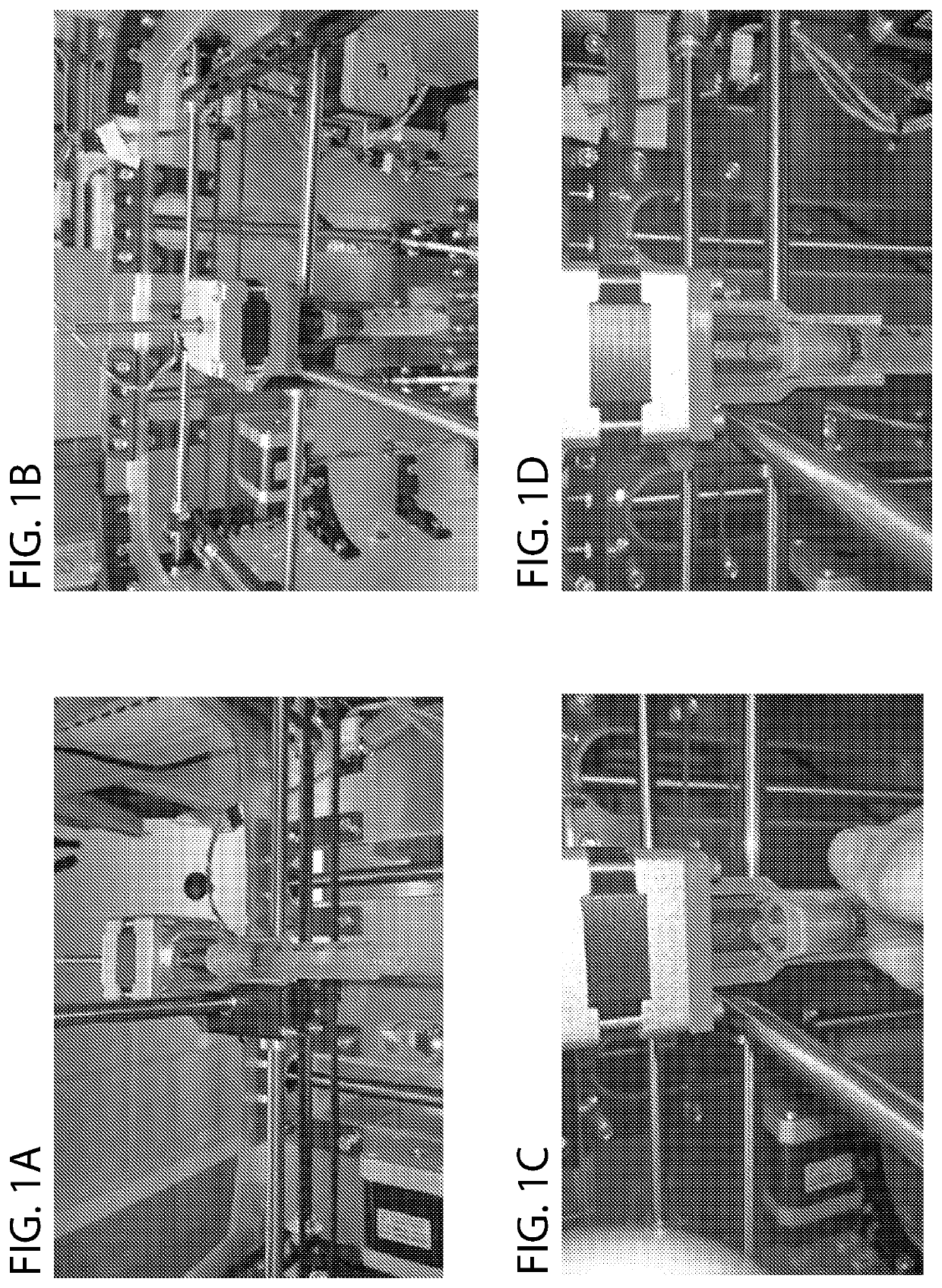Compact mechanical syringe extruder for 3D bioprinting of cell laden gels
a bioprinter and syringe technology, applied in the field of bioprinter system for fabricating system, can solve the problems of large volume of mechanical system, limited precision and simplicity, and damage to cells caused by pneumatic vacuum pressure through tubing or passage through long pneumatic tubing
- Summary
- Abstract
- Description
- Claims
- Application Information
AI Technical Summary
Benefits of technology
Problems solved by technology
Method used
Image
Examples
example 1
[0035]Bioprinting may enable researchers to overcome limitations of current methods to construct macro-scale structures, organize different cell types together, and generate very specific shapes. To overcome size limitations, bioprinting is accomplished by generating a 3D computer model; generating a series of cross-sections of the model; then instructing a printhead to draw each cross-section and deposit material to construct the original 3D shape layer-by-layer.
example 2
[0036]Bioprinter incorporating stepper motor and threaded shaft
[0037]As shown in FIG. 1, the bioprinter includes a motorized extruder that obviates the needs for a bulky linear rail system. Whereas conventional designs couple a threaded shaft to a fixed shaft on a stepper motor, the stepper motor turns a threaded shaft directly. This obviates the need for pneumatic vacuum pressure systems and also reduces the gantry size, which allows for higher precision printing due to decreased weight removal of components that otherwise reduce tolerances due to mechanical play. The threaded shaft snaps into place for a plunger on a syringe, eliminating another source of mechanical play, by using a snap-fit coupling. The snap-fit coupling also allows easy loading and re-loading by providing for manual plunging of the syringe as shown in FIG. 2. Using a plunger extension that couples to the miniaturized plunger, the same snap coupling as the motor allows easy swapping. Another depiction of assembl...
example 3
[0038]Assembly and twin extruder design
[0039]An advantage of the system is that the simplified construction allows for multiple extruders to be assembled together, as shown in FIG. 6. In another perspective, the extruder is mounted on the assembly. In these designs, one could load two different bioink cell types in each extruder, or a cell type and other mechanical substrate in each extruder, with sequential or parallel fabrication, obviating the need to change bioinks / mechanical substrates, as is needed in conventional systems.
PUM
| Property | Measurement | Unit |
|---|---|---|
| Temperature | aaaaa | aaaaa |
| Volume | aaaaa | aaaaa |
| Volume | aaaaa | aaaaa |
Abstract
Description
Claims
Application Information
 Login to View More
Login to View More - R&D
- Intellectual Property
- Life Sciences
- Materials
- Tech Scout
- Unparalleled Data Quality
- Higher Quality Content
- 60% Fewer Hallucinations
Browse by: Latest US Patents, China's latest patents, Technical Efficacy Thesaurus, Application Domain, Technology Topic, Popular Technical Reports.
© 2025 PatSnap. All rights reserved.Legal|Privacy policy|Modern Slavery Act Transparency Statement|Sitemap|About US| Contact US: help@patsnap.com



